Label:
|
none |
|
Model:
|
Orchestra horn with Terminal Crook |
|
Serial Number:
|
none |
|
Date of Manufacture:
|
ca. 1800? |
|
Key(s):
|
Determined by terminal crook |
|
Valves:
|
none |
|
Bore:
|
|
|
Bell Flare:
|
seam at throat |
|
Bell Throat:
|
|
|
Bell Diameter:
|
|
|
Base Metal:
|
yellow brass |
|
Finish:
|
unlacquered |
.
(click on photos for larger view)
|
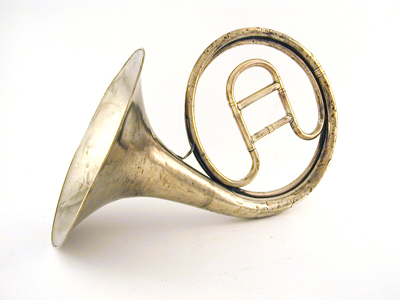
|
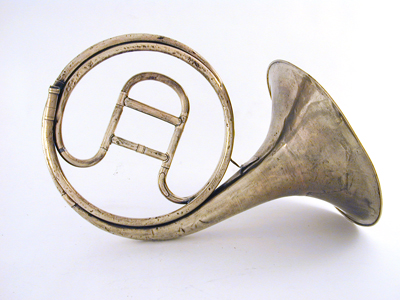
|
The distinquishing characteristic of this horn is the shape of the tuning slide. The legs
the tuning slide do not cross over one another at their base as found on other types of
natural horns. This follows the
pattern of the Inventionshorn attributed to Bohemian horn virtuoso Anton Hampel and
Dresden maker Johann Werner in the 1750s. According to Reginald Morley-Pegge, Hampel was
dissatisfied with the terminal master crook and multiple couplers commonly used in the
first half of the eighteenth century. "The alteration consisted in restoring the original
fixed mouthpipe, cutting one coil of the hoop, and bending the cut ends towards the centre
of the circle; the cut ends were then fitted with sockets into which the crook, provided with
corresponding tenons, was inserted" (The French Horn, 1973, p. 20).
Later, Joseph and Lucien-Joseph Raoux of Paris, at
the suggestion of Carl Türrschmidt, strengthened the design by crossing the legs of
the medial crook to form the cor solo. It was also used on the terminally crooked
cor d'orchestre. In Germany, however, the Orchesterhorn combined terminal
crooks to determine the key with Hampel's original pattern of uncrossed legs to the medial
tuning slide. Horns of this design continued in use from the late eighteenth century through
the first half of the nineteenth century. Notice that the only braces to the tubing are
the two that maintain the spacing between the tuning slide legs. (See also the examples below)
|
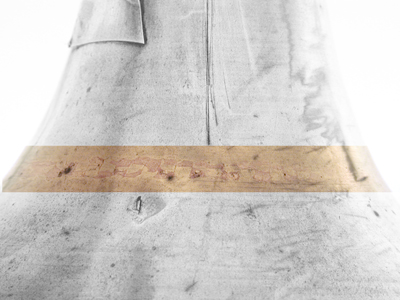
|
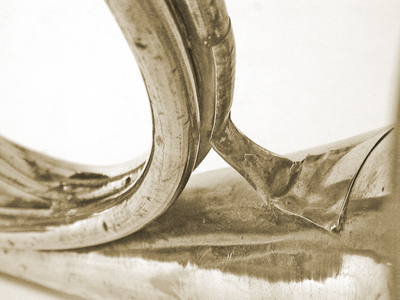
|
The bell flare on this horn is not constructed in the typical vee-gusset inserted into
the seam. Rather the flare ia separate piece seamed into the tail at the bell throat,
as shown in the color-highlighted band in the above left photo.
The sheet metal bell brace is of the simplest form. (Photo above right)
|
Horace Fitzpatrick (The Horn and Horn-Playing, 1970, p.139) ascribes this pattern to
Vienna makers. He describes it in some detail:
"That the Orchesterhorn (or Kirchenhorn, as it is still locally known in Austria because of
the favour it found with provincial church orchestras) grew out of the Hampl-Werner
Inventionshorn as a Viennese adaptation is virtually certain, for its type is peculiar to
makers at Vienna and Prague. It is difficult, however, to say when this model was first
brought out, or by whom. Even an obviously early specimen such as that illustrated on
Plate Xb bears no date, and no dated examples of the first models have as yet come to light.
This particular instrument clearly shows the parentage of the terminally crooked Waldhorn
and the Inventionshorn's central slide, however; and it is reasonable to estimate its date
at c. 1760. [Footnote 1: A further clue to its date is the grotesque enlargement of the bell
throat which makers at this transitional stage felt was necessary to provide room for the
stopping hand to perform its new functions. Both left- and right-handed models were made.]
Although the tuning-slide is missing, this horn affords a good example of the earliest
model to incorporate both features. It is signed 'Wenzel Landa in Prag'..."
|
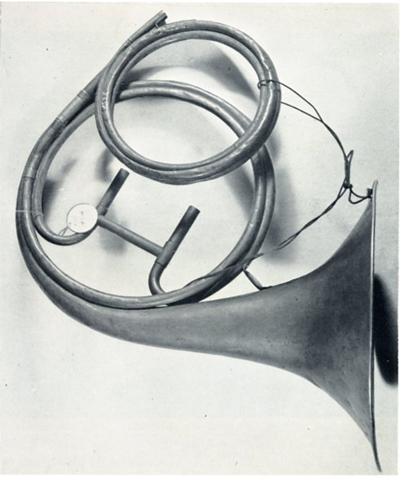
|
Reginald Morley-Pegge (The French Horn, 1973, Plate III) describes a similar horn
(photo right) as follows:
"French Horn after the German model. Marked: CLEMENTI. Made, probably, in Germany about
1800 and sold by Clementi. This well-known firm's name is found on many early 19th-century
instruments, both woodwind and brass, but it is more than doubtful if they actually made
any other than the Nicholson flutes of which there were so many in collections."
|
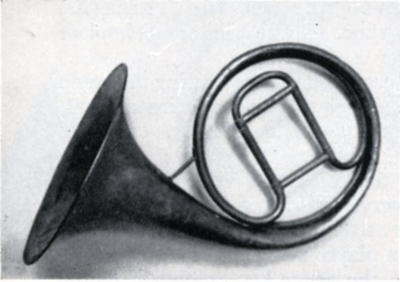
|
Jeremy Montagu (The French Horn>/i>, (1990, p.12) describes the horn pictured at right
as "Anonymous horn, probably German, probably third quarter of the eighteenth century, with
the tubing cut and bent inwards into the circle so that a tuning slide can be fitted. With
later models, the legs of the tuning slide cross each other before projecting into the
circle, a much stronger construction."
Note that this horn has additional bracing from the tuning slide to the main tubing
of the body. Though not mentioned in the description, it is terminally crooked.
|
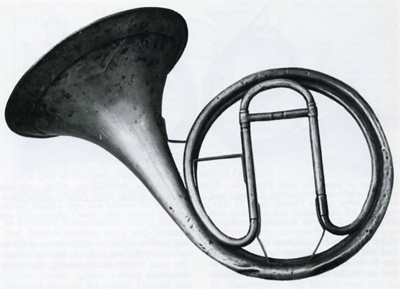
|
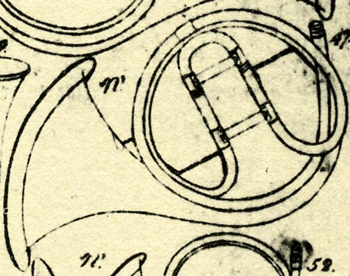
|
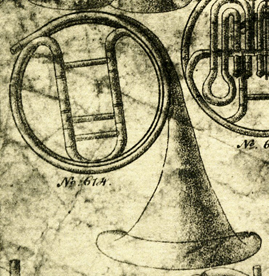
|
Two later examples of the classic German Orchesterhorn are found in the brochures
of J. Käpffens Söhne, Neukirchen (or Markneukirchen), ca. 1833 (left), and
C.G. Herold, Klingenthal, ca. 1842 (right). Both firms were known as string instrument
makers and general musical instrument dealers.
|